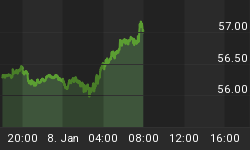Introduction
For many chartists and technical analysts, candlesticks provide the richest and most informative charting experience. Their use dates back to the founder of this method of charting, Munehisa Homma (a.k.a. Sakata), who was an 18th century Japanese businessman who developed this technical analysis method to analyze the price of rice contracts. His then new method of charting contained the same information of traditional OHLC bars but in a much more visually informative way and the term "candlestick" was coined due to their similar appearance.
The most useful aspect of this type of charting is that one can identify specific candlestick patterns that tend to repeat consistently regardless of the particular item being charted, such as stocks, bonds and commodities. These specific patterns have been noted so often, that they have been assigned varying degrees of reliability.
The purpose for this essay is to inform that a particular candlestick formation, an Evening Star, has developed on the Nasdaq weekly chart that is a high reliability bearish pattern which usually occurs at market tops. This formation likely encapsulates a turning point in the stock market, and its formation warns in clear technical terms that markets have a high probability of heading lower.
January's "Audible Bang"
The week of January 16-20 was arguably the single most profound week for equities in years. Like an audible bang, Monday through Wednesday, the world witnessed a tremendous selloff in Japanese equities on the Tokyo Stock Exchange (TSE) such that by Wednesday, their market was forced to close 20 minutes early due to a massive deluge of sell orders. Their recently improved order processing system was supposed to be able to handle 4.5 million stock transactions per day, but when the level of orders reached 4 million, the market officials decided to close the market for fear of breaching the market's order handling capacity.
In three days, the TSE dropped 1,000 points, losing the equivlent of $300 Billion dollars, roughly equivalent to the GDP of Sweden. The selloff was largely attributed by the media to the Japanese SEC raiding the offices of a small internet company called "Livedoor", but this is only the headline. The reality was that the TSE's intense decline was due to a collective realization that equities were overvalued and what started as an orderly decline sparked a genuine market panic not seen since the tech wreck of 2000.
The TSE's president, Taizo Nishimuro said about the 3-day plunge, "The current situation is totally unexpected." Not quite. I put forth for your consideration that the TSE's recent decline as well as Friday's steep decline on all three major U.S. indicies which was spearheaded by a handful of darling tech stocks were predictable using standard technical analysis. In my previous essay, "DJ World Stock Index Emulates Pre-Crash Nikkei", I made the argument via comparison to the Nikkei 1997-2000 that the world stock indicies are collectively overvalued and due for what could become a crash. With the perspective gleaned from this essay, one can liken the seismic tremors of the TSE to a volcano sending out plumes of steam before the eruption upon global markets.
In addition, the markets are now telegraphing that they are in a position where a major decline is imminent due to the appearance of a high reliability candlestick called the Evening Star Bearish.
Evening Star is a Lethal Formation
Having viewed dozens of instances of Evening Stars over the years, I can confidently say they have a strong propensity to be the pivot upon which considerable declines initiate. Today we have a particularly treacherous cocktail when we see this formation on a weekly scale and is occurring in conjunction with major market turbulance as we witnessed on the TSE, alarming geopolitical posturing, increasing uncertainty with regard to oil supplies pushing oil to within a hair of $70/bbl, fresh threats against the U.S. from the murderous mujahadeen Osama Bin Laden, increasing awareness that the well of home equity loans that has kept the U.S. economy buoyant throughout 2005 has been tapped dry as we enter a declining housing market, and as if that wasn't enough, a shiny new scholarly academic and yet untested chairman of the Federal Reserve, Ben Bernanke to take office February 1st.
Clearly the markets are spooked, and they are showing us their fear in the following formation:

Conclusion
The decline of the Tokyo Stock Exchange in the beginning of last week and Friday's decline across the board in markets here in the U.S. are seismic tremors which confirmed the third candlestick in the weekly Evening Star formation. Markets hate uncertainty and they have to contend with a plethora of converging economic problems and geopolitical fears. That uncertainty has now been visably telegraphed in the weekly stock charts such as the NASDAQ.
The confirmed weekly Evening Star is ominous going forward. Since it carries a high reliability, one can envision that the stampede for the fire exits as we saw in the Japanese stock markets could quickly flash around the world to others including our own as we saw on Friday. Particularly vulnerable would be emerging markets which have seen their market capitalization rise dramatically in the past year. The markets have given us a sign and we would be wise to heed the Evening Star.
Candlesticks aren't perfect by any means and can fail to follow through, therefore one should consider this essay an amateur's observation of a technical anomaly which may or may not play out, and would be prudent to consider consulting a financial professional before making any decisions regarding your finances.
If you would like, please visit my free public website on StockCharts.com, Black Magic Charts, for both tactical and strategic views on the NASDAQ 100 and corresponding leveraged mutual funds, among others. This is offered for entertainment purposes only and contains no advice to trade with real money.
Best regards to you for a happy and prosperous 2006.
















